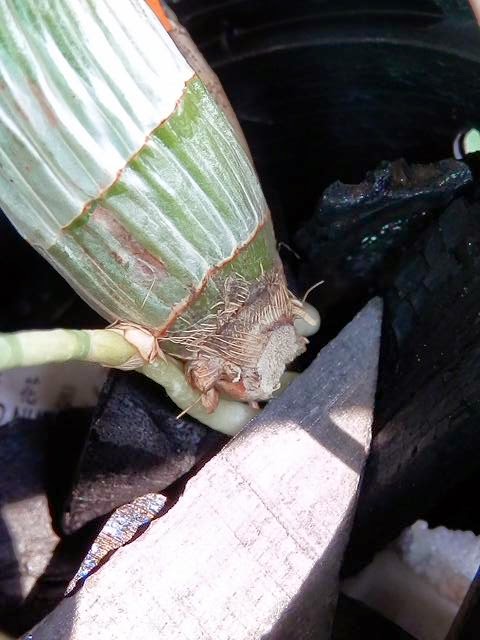catasetum planiceps, spiek is upright and most commonly mistaken for a female spike of other catasetums to one that is not familiar with catasetums. another catasetum that is commonly mistaken for a planiceps is its natural hybrid, Catasetum xwendlingeri (pileatumxplaniceps)
flowers are non resupinated, the petals and sepals are held tightly against the opening of the hood. slight fragrance, and the flowers turn from green to slightly yellow as it ages. spike emerges from the base of the bulb and produces spike at the stage where the growth is still relatively immature.
the anternna residing in under the hood of this catasetum, indicating a male flower. this is a large catasetum with a very long erected spike. mine is 52.1cm and i believe mine is only a teenager planiceps.
pic showing the appearance of the erected spike emerging from a relative immature new growth
the two pics below show partially the trigger pollina of this male flower
the sepals and petals are tightly clasped against the opening of the hood. the pair of isoceras antennae is visible in this view as well. the antennae run upwards and curve slightly and in the same time started to diverge from each other as they are running upwards of the inner dome.
lateral view of the flower, showing the dome shape appearance of the hood with the characteristic recurvated tip of the labellum
last two additional pic showing the planiceps with natural background
15/7/2014
IT HAS BEEN THREE MONTHS since the last spike, and yes,,,this PB haven't fully mature and had recently come out with two additional spikes. it had already been about 5 months since sprouting of this growth till this current blooming, and by next month it would be 6 months. 6 months for bulb maurity?!..including of dormancy period, this planiceps only yields only 2 to 3 bulbs per year on average basis. seems like the bigger they get, the longer the cycles























































